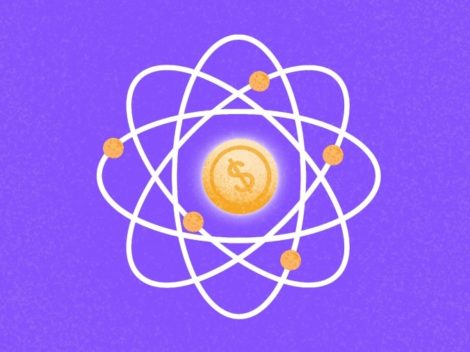Now that 2017 has come to a close, there is time to reflect on both the last quarter and the year as a whole. This assessment hopes to help answer a question all investors and other beneficiaries of the financial system reckon with: What kind of year has it been, and what can this tell us about how the next year will play out?
This report from Crunchbase News takes a deep dive into the state of the global venture capital ecosystem, with the help of data and projections from Crunchbase. Here, we want to assess both investment and liquidity, or what we call Money In and Money Out.
In the Money In section, we will cover Crunchbase’s projections of how much capital venture investors deployed in both Q4 2017 and throughout the year as a whole. When possible, comparison to prior quarters and years will be made.
In the Money Out section, we will review acquisition statistics compiled by Crunchbase and highlight other notable liquidity events like initial public offerings (IPOs).
To help make this report more digestible, each section will include a Q4 2017 and Annual key finding summary.
Money In
- Q4 Key Finding. Venture capital dollar volume and deal counts are down for most stages of funding relative to figures from Q3 2017, with angel and seed-stage deals leading the decline.
- Annual Key Finding. Despite Q4’s downward trend compared to Q3, 2017 closed out ahead of previous years in terms of total venture deal and dollar volume. Early-stage deals drove most of the increase in deal volume, while increases in late-stage and technology growth investment can be credited for much of the dollar volume expansion for the year.
Venture Capital Landscape Overview

It’s often the case that progress takes two steps forward and one step back. While this may feel frustrating to those experiencing the setback, it’s important to remember that, on net, VC investment is are one step further along than it was before.
That principle holds true in venture as well. After close to a year of consistent quarterly growth across almost all stages of funding, the fourth and final quarter of 2017 brought that trend to its inevitable conclusion. This all comes despite record-breaking highs on public stock markets in the US and elsewhere, a surprising level of geopolitical calm given the noise on social media, and continued advancements in new technologies. Maybe everyone was too busy fixating over the price of bitcoins and its cousins to make deals in dowdy old fiat currency.
Regardless of the reason, the math still works out favorably: the global venture capital market underwent a growth spurt that lasted a solid three to four quarters, depending on which metric you are looking at. And although Q4 2017 represents a step back, it caps off a strong year for the global venture investing market as a whole.
Global VC Funding: A View From Above
In this section, we’ll take a high-level look at the state of the global venture capital market. In broad strokes, we’re going to examine both the overall size and quantity of venture capital deals in the fourth quarter and in 2017 more generally. After a broad look, we will take a look at funding statistics on a stage-by-stage basis.
Pace Of Dealmaking
In the context of previous quarters and previous years, we can start answering, with the benefit of hindsight, how did the last quarter or year stack up?
Below, we’ve charted the projected count of venture capital rounds in Q4 2017 and the four prior quarters. (For more information about Crunchbase’s projections and methodology, see the Methodology section at the end of this report.

In Q4 2017, venture investors around the world retraced their steps from Q3, which was the most active quarter – globally speaking – since the collapse of the Dot-Com bubble.
Crunchbase projects an overall quarterly decline in aggregate venture deal volume of just under 13 percent. The pace of dealmaking slowed across all stages, but the downswing was primarily driven by a significant decline in round count at the earliest stage of venture funding—the angel, seed, convertible notes, and related deal types that make up the bulk of venture deal volume around the world.
Although Q4’s slowdown in venture dealmaking marks an end to a four-quarter period of growth, in the big picture, Q4 venture deal volume—a projected 5,339 rounds in total—was still above a three-year average and almost two percent larger than the fourth quarter of 2016.
Venture deal volume has been relatively stable for the past several years, as we’ll see in the chart below, which displays Crunchbase’s quarterly projections since the beginning of 2014.

As the chart shows, venture capital deal volume ebbs and flows in fits and starts; however, the global market continues to grow. Crunchbase projects that in 2017, nearly 22,700 venture deals were struck, up 3.6 percent from 2016’s totals, which is largely attributable to an increase in early-stage dealmaking.
Projected VC Dollar Volume
Even if movement in global venture dollar volume doesn’t precisely mirror shifts in deal volume, it certainly rhymes.
In the chart below, we plot Crunchbase’s projections for venture dollar volume in Q4 2017, as well as the preceding four quarters.

As is the case with the count of deals, projected global venture dollar volume pulled back from previous record highs in the final quarter of the year. At a projected total of $53.7 billion in venture capital deals around the world, Q4’s totals shrank 19.5 percent since Q3 2017. Declines in early-stage and late-stage deal volume led the downward charge.
However, venture dollar volume in Q4 2017 was still larger – by a factor of 33.4 percent – than the same time period in 2016. And if one were to zoom out and look at 2017 as a whole, this pattern of annual growth is similar.
Below, we graph Crunchbase’s projections for global venture dollar volume, on a quarterly basis, since the beginning of 2014:

Unlike deal volume, sussing out a trend in global venture dollar volume isn’t that hard. The general trajectory is definitely up and to the right over time. Crunchbase projects a total of $213.6 billion flowed from investors to ventures over the course of 2017, an increase of 23.6 percent from 2016. Across all stages, dollar volume was higher in 2017 than the previous year, but late-stage dollar volume grew the most, a 25.7 percent increase representing $21 billion in added capital.
Most Active Lead Investors
With a decent understanding of the size and shape of the venture capital market in Q4 and 2017 as a whole, let’s take a closer look at some of the most active participants in that market. In more ways than one, leadership matters in the venture capital business, but here we are focusing specifically on the number of rounds a given investor led.
Using Crunchbase data for over 15,700 venture capital deals struck throughout 2017, we identified 4,360 individual investment groups that led at least one funding round. And in the chart below, you can find some of the most prolific among them, ranked by the number of rounds they led, according to Crunchbase data.

These investors will be familiar to those who read Crunchbase News’s global venture capital reports for Q1, Q2, and Q3 of this year, considering that these investors ranked high on those quarters’ lists of round leaders. In other words, it’s the usual suspects, which primarily consists of:
- Well-established firms such as Sequoia Capital and New Enterprise Associates make the list.
- Accelerator programs like Y Combinator and 500 Startups.
- Big corporate-backed funds like GV (Google Ventures), Tencent Holdings, and SoftBank, the latter of which went on quite the investing spree this year, as Crunchbase News has covered.
It is important to note that there were many rounds in the dataset for which a lead investor wasn’t explicitly listed. However, more often than not, some investor led a round. So in reality, some of the round leadership statistics cited above are larger than reported here, and it is subject to change over time as new data is added.
Of course, there’s going to be some variation in the ranks from quarter to quarter and year to year. But the ranking above points directionally to the most active investors operating in the market today.
Stage-By-Stage Analysis Of Q4 2017 & Annual VC Funding Trends
Earlier, we referenced a section where we’ll paint a picture of the global venture investment ecosystem with a much finer brush. We finally made it.
To start, we will go close to the metal by looking at seed and angel-stage deals and then move further up the stack.
Angel And Seed-Stage Deals
With few exceptions, seed and angel-stage companies don’t raise a lot of capital. Still, it’s an important category to understand well. Because today’s seed and angel-stage companies are at the wide end of the funding funnel, looking at this population of startups today can point to what the early-stage and late-stage deal flow pipeline will look like a few years from now.
Below, we’ve plotted Crunchbase’s projections for seed and angel-stage deal and dollar volume, which also includes equity crowdfunding rounds and a few other round types. (Again, to learn more about these categorizations, check out the methodology section at the end of this report.)

This is a small but mighty asset class. Although seed and angel-stage deals accounted for just 4.4 percent of total dollar volume in Q4 2017, they represented 58.5 percent of the total deal volume.
When comparing Q4’s performance to Q3, angel and seed-stage deals are also the only bright spot in the global venture funding ecosystem. Dollar volume into seed and angel-stage deals was up by 11.3 percent. For all other stages, dollar volume was down on a quarterly basis. Compared to Q4 2016, projected dollar volume is up roughly 17.5 percent.
However, this bright spot is somewhat tarnished by a downswing in deal volume. Compared to the high point of Q3 2017, there was quarter-over-quarter downswing of 15.8 percent in seed and angel-stage deal volume. Relative to the same time last year, deal volume is also down 2.1 percent from a projected 3,193 seed and angel-stage rounds in Q4 2016 to 3,126 rounds in Q4 2017.
Looking at deal and dollar volume in 2017 as a whole, though, a slightly rosier picture emerges. With a projected $8.5 billion invested in over 13,700 seed and angel-stage deals around the world throughout 2017, both of these key metrics are up. Seed and angel-stage deal volume is up a modest 1.6 percent; meanwhile, dollar volume grew by a more noteworthy 8.1 percent since 2016.
But capital and deal volume is just part of the story, though. In the chart below, we show the growth of average and median seed and angel-stage rounds. Now, before continuing, it’s important to mention that the numbers below reflect known deals of this stage in Crunchbase. The chart below – and, indeed, all of the following charts which display average and median round sizes – is based on reported data. This is unlike the charts for deal and dollar volume, both of which display projected data.

Seed and angel-stage round sizes broke the trend of stagnation in Q4 2017. On both a quarterly and year-over-year basis, average and median round sizes grew by a notable margin. Relative to Q3 2017, the average round grew by a respectable 58.2 percent and, remarkably, median round sizes more than doubled. Compared to Q4 2016, the average round is now 63.5 percent larger and median round size is up 80.13 percent.
This slow, creeping year-over-year growth in round size is a pattern that is repeated across most other stages of venture funding. In the case of seed and angel-stage deals, the change may appear starker. For example, the yearly average for rounds raised in 2015 was a comparatively paltry $710,000, and the median round size for that year was $320,000. Relative to 2017’s average of $1.05 million and median of $527,000, we are looking at growth in the roughly 50 to 65 percent range for seed and angel-stage rounds around the world. Again, this is based on reported data, which is subject to change as new data is collected by Crunchbase.
So which firms are the most active investors in companies of this stage? Using Crunchbase data, we identified 6,554 institutional and individual investors that participated in at least one seed or angel-stage deal in 2017. We then ranked them by the number of deals they participated in, which you can view in the chart below:

Again, like with the lead investment rankings, this chart shows the types of firms one would expect to see here, namely accelerator programs like SOSV and Techstars, and dedicated seed funds like Right Side Capital Management. After all, these are firms in the business of investing in early-stage businesses at scale.
Early-Stage Deals
Early-stage – primarily Series A and Series B rounds, with a smattering of others included – is up next. And in what will no doubt become an all-too-familiar pattern throughout the remainder of this report, both deal and dollar volume were down in Q4 despite significant gains earlier in the year.
Below, we charted Crunchbase’s projections for early-stage deal and dollar volume.

Now is where we start to see trends that are more representative of the market as a whole. In Q4, early-stage investments accounted for 33.7 percent of the rounds and 34.2 percent of the dollar volume, enough for changes in this segment to affect the performance of the entire market.
So what about those changes?
On a quarter-over-quarter basis, deal and dollar volume both declined from previous highs to the tune of 6.15 and 18.7 percent, respectively. However, compared to Q4 2016, early-stage deal volume is up by 8.1 percent, while early-stage dollar volume in Q4 2017 is up a more striking 43.7 percent.
Zooming out to focus on 2017 as a whole, early-stage venture investment also grew. Crunchbase projects that in 2017 a total of $70.18 billion was invested in just short of 7,200 early-stage deals around the world. Dollar volume was up roughly $2.32 billion, or 3.4 percent, from 2016. On the deal volume front, Crunchbase projects that there were 382 more early-stage deals in 2017, up 5.6 percent since 2016.
Shifting now to the size of deals over time, let’s look reported early-stage rounds in the chart below:

After a sustained run-up in the average size of early-stage rounds, that growth seemed to trail off in the last quarter of 2017 with a decline of roughly 6.2 percent. However, median round size continued on its upward path with a gain of 13.3 percent from Q3 2017. Compared to the same time last year, both average and median round sizes are appreciably higher, growing by 40 and 31.7 percent, respectively.
The aforementioned upward creep in round sizes is also readily apparent in early-stage deals as well. The average early-stage round in 2017 was $12.01 million, compared to $11.8 million in 2016 and $10.25 million in 2015. And a similar trend can be found with median round size too. 2017’s median of $5.97 million compares favorably to the $5 million median from both 2016 and 2015.
And regarding the firms which invest those larger and larger checks, we haveve charted the top-ranked firms out of the 3,633 unique firms and individuals that participated in early-stage rounds around the world in 2017.

Late-Stage Deals
As with early-stage deals, late-stage deal activity is a sizeable chunk of the overall market, perhaps especially so in Q4 2017 due to significant gains in that segment of the market. Representing just under 7 percent of the overall deals struck in Q4, late-stage deals accounted for 52.8 percent of total dollar volume, making the global venture capital market somewhat top-heavy.
To assess how late-stage deal and dollar volume from Q4 stack up to previous quarters, see the chart below which displays projected Crunchbase data for late-stage deal activity.

Q4 brought about the end of a year-long run-up in global dollar volume, and a period of expansion for round counts that stretches back five quarters to Q3 2016. At least for dollar volume, quarterly declines were quite modest, falling only by 2.6 percent. A drop of 16.25 percent in deal volume since last quarter, though, is less modest.
Compared to the same period last year, total late-stage deal volume in Q4 2017 is up 7.9 percent, and dollar volume is up 61.6 percent.
Gains like that, in percentage terms, are definitely notable, but it’s when you pull back and think of those gains in dollar terms that things begin to encroach into mind-boggling territory. To magnify this effect, let’s look at last year as a whole.
Crunchbase projects that a total of about $102.81 billion was invested in late-stage venture deals in 2017, up 11.2 percent or $21.03 billion more than the previous year. For reference, that’s a smidge under Papua New Guinea’s projected nominal GDP for 2017. Just three years ago, in 2014, a projected total of $60.91 billion was invested in late-stage deals. 2017’s total, some $41.9 billion greater than 2014’s, is a bit larger than the projected nominal GDP of the Democratic Republic Of The Congo.
For the sake of completeness, let’s touch on annual changes in deals, too. 2017’s projected total of 1,577 late-stage deals struck with companies from around the world is 11.2 percent higher than 2016’s projected total of 1,418.
More money flowing in, in the context of relatively smaller increases in the number of rounds, would lead one to correctly believe that round sizes have been creeping up. Below, we plot reported data from Crunchbase for late-stage round sizes over the past year:

Since the previous quarter, the average late-stage venture deal grew by 16.8 percent, while the median grew by 13.3 percent. But it’s perhaps in late-stage deals that the annual trend of growing round sizes becomes even more apparent. Compared to Q4 2016, the average late-stage deal is 48.4 percent larger, and median deal size is up 31.7 percent.
Earlier, we said that due to the small number of late-stage deals, relative to total dollar volume those deals account for, we can think of the global VC market as “top heavy.” Put differently: you could also think of late-stage venture capital as a small pond with some fairly big fish. Let’s take a look at the investors that angled for the most late-stage deals in 2017. The chart below shows the top-ranking investors out of an initial pool of 2,383 firms that invested in one or more late-stage venture deals last year:

Technology Growth Deals
Let’s start the discussion of “technology growth” by saying up front that it is a bit of an oddball category. These super late-stage private equity deals, often struck with companies prior to going public, presented the Crunchbase News team – and indeed the rest of Crunchbase – with some challenges in the past.
In our Q1 and Q2 reports, you could find plenty of ungainly charts covering this category of funding. However, by the time we wrote the Q3 report, it had become clear that there was something wrong with how the data for this stage of funding was compiled. Due in no small part to SoftBank’s rip-roaring splurge on late-stage startup equity in that quarter, we realized that gaps in the data were so large and disjointed that we opted to do away with covering the category altogether—until this report.
In collaboration with Crunchbase’s data team, the News team worked to redefine what “technology growth” is, as a category.
The old definition, in plain English: “Any ‘private equity round in which a ‘venture’ investor also participated.”
You could see how this is a problem. What if there was only one listed investor and it isn’t a “venture” investor, such as in the case of a $4.4 billion PE round raised by WeWork from SoftBank?
Here’s the new definition of technology growth in plain English: “Any ‘private equity’ round raised by a company that has previously raised ‘venture’ financing in a prior round, such as a seed round or Series C.”
In the chart below, we plot Crunchbase projections for technology growth rounds in Q4 2017 and in the year preceding it.

As is the case with late-stage rounds, technology growth had a bit of a bull run for over a year, but that came to an end in Q4. Compared to the prior quarter, growth-stage deal volume declined 29.3 percent, and dollar volume dropped by 64.5 percent.
Unlike other types of funding rounds, there is no “one size fits most” solution at the technology growth stage. As we can see in the chart below, average and median round sizes are sporadic.

Because of the somewhat helter-skelter distribution of average round sizes, we’ll skip those and focus on median round sizes instead. The median round size in Q4 2017 is 90.7 percent larger than the preceding quarter. Relative to the same period last year, the median tech growth round is 87.8 percent larger.
Money Out
- Q4 Key Finding. Q4 2017 continued to show that the IPO window remains open, but M&A options continue to dwindle as acquisitions of venture-backed companies continued to decline further from Q3.
- Annual Key Finding. 2017 was a surprisingly strong year for technology IPOs, and a welcome relief to both public and private-market investors who thought the deals would stop flowing. This being said, M&A activity for venture-backed startups in 2017 was the weakest it’s been in years.
Venture-Backed Acquisitions
We’ve spent a lot of time in the previous sections focused on the “input” side of the venture capital equation, but we’d be remiss to not mention the output side as well.
Mergers and acquisitions is one of the two primary ways capital is returned to venture investors, ideally in a greater amount than they put in.
In the chart below, we have plotted reported data for venture-backed mergers and acquisitions in Q4 and prior quarters.

Similar to technology growth rounds, total dollar amounts can be a little chaotic. All it takes is one or two massive M&A events (like any one of these $1 billion+ deals from 2017) to skew an entire quarter’s numbers artificially skyward; therefore, we’ll focus on deal volume as the primary metric here.
As we’ve pointed out in previous reports, there appears to be a general downtrend in M&A activity for venture-backed companies. According to Crunchbase data, it peaked in Q2 2016 (not pictured in the chart above) with 364 exits, and it has been somewhat downhill from there. Between Q3 2017 and Q4 alone, venture-backed M&A deal volume declined roughly 10.5 percent. From its peak in Q2 2016, deal volume has declined by 20.6 percent, leaving venture investors with ever-fewer options to get their cash back.
Below, we’ve shared some of the more notable acquisitions from the final quarter of 2017. Most, but not all, of the acquired companies listed here received venture funding at some point.

Initial Public Offerings
Initial public offerings (IPOs for short) are the second primary way venture investors can cash out their positions in a company. (There are other options out there, but that’s outside the scope of this report.)
After a long cold spell throughout 2016, the tech IPO market finally thawed out in 2017. Q4 continued the momentum of prior quarters with a number of notable tech IPOs, a selection of which we’ve listed below.

There are no clear signals of what the 2018 tech IPO market might look like, but it’ll probably be impressive. A number of large private companies stand a fairly decent chance of going public – or at least filing initial paperwork with the SEC to do so – in the next year or two. According to press speculation reviewed for this report, this list of companies may include the likes of Lyft, Dropbox, Cloudflare, Xiaomi, Zscaler, Qualtrics, and others.
Given the somewhat tepid response to consumer-focused offerings like Snap and Blue Apron earlier this year, it’d be safe to assume that the IPO market in 2018 will continue to favor more enterprise-oriented companies.
Conclusion
Although the tone of the Overview section was decidedly optimistic and cheerful, it’s important to acknowledge that Q1 2018 and beyond is not without its headwinds.
For better and worse, the United States has led the world in venture deal and dollar volume, and as Crunchbase News has reported previously, there appears to be a slow hollowing-out of the early-stage pipeline. That may not seem like such a big deal today, but don’t be surprised if several quarters down the line there are fewer big deals (forgive the pun) being struck around the world.
There are other, smaller ones too. A new tax plan in the US may threaten the country’s financial stability in the coming quarters and years. The threat of geopolitical conflict in the vicinity of China—one of the largest VC markets outside the US—looms large. Cryptocurrencies and other shiny blockchain geegaws may distract investors from more traditional technology startups. Hell, there was just an earthquake, albeit a small one, in the Bay Area.
Lots of stuff can happen.
Perhaps the cooling-off period at the end of last year is a good thing. In the conclusion of the Q3 report, we referenced the Greek mythical figure of Icarus, who flew his wax wings too close to the sun. With some time off the heat the market can take some time to firm up a bit before taking off again.
Methodology
The data contained in this report comes directly from Crunchbase, and in two varieties: projected data and reported data.
Crunchbase uses projections for global and U.S. trend analysis. Projections are based on historical patterns in late reporting, which are most pronounced at the earliest stages of venture activity. Using projected data helps prevent undercounting or reporting skewed trends that only correct over time. All projected values are noted accordingly.
Certain metrics, like mean and median reported round sizes, were generated using only reported data. Unlike with projected data, Crunchbase calculates these kinds of metrics based only on the data it currently has. Just like with projected data, reported data will be properly indicated.
Please note that all funding values are given in U.S. dollars unless otherwise noted. Crunchbase converts foreign currencies to US dollars at the prevailing spot rate from the date funding rounds, acquisitions, IPOs, and other financial events as reported. Even if those events were added to Crunchbase long after the event was announced, foreign currency transactions are converted at the historic spot price.
Glossary of Funding Terms
- Seed/Angel include financings that are classified as a seed or angel, including accelerator fundings and equity crowdfunding below $5 million.
- Early stage venture include financings that are classified as a Series A or B, venture rounds without a designated series that are below $15M, and equity crowdfunding above $5 million.
- Late stage venture include financings that are classified as a Series C+ and venture rounds greater than $15M.
- Technology Growth includes private equity investments in companies that had previously raised venture funding.
Illustration: Li-Anne Dias

Stay up to date with recent funding rounds, acquisitions, and more with the Crunchbase Daily.






![Illustration of a guy watering plants with a blocked hose - Global [Dom Guzman]](https://news.crunchbase.com/wp-content/uploads/quarterly-global-3-300x168.jpg)
67.1K Followers